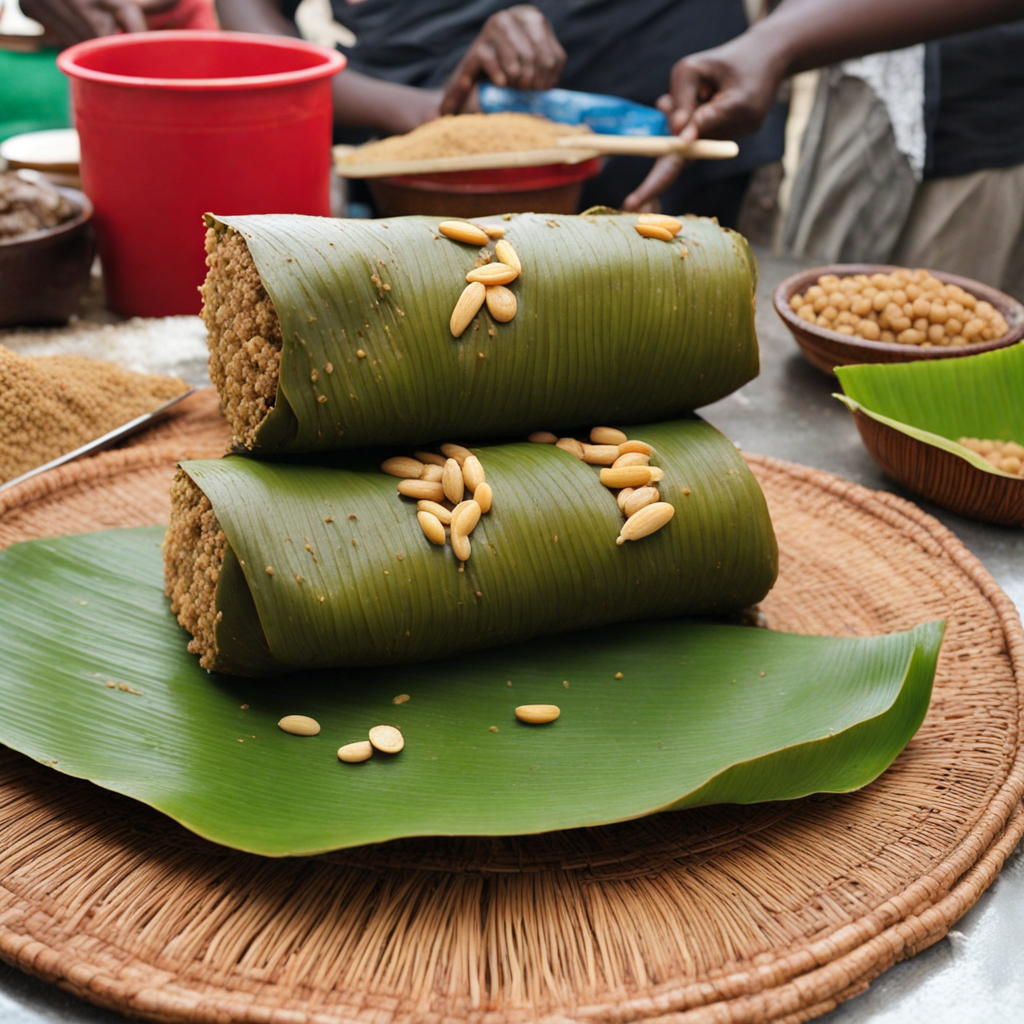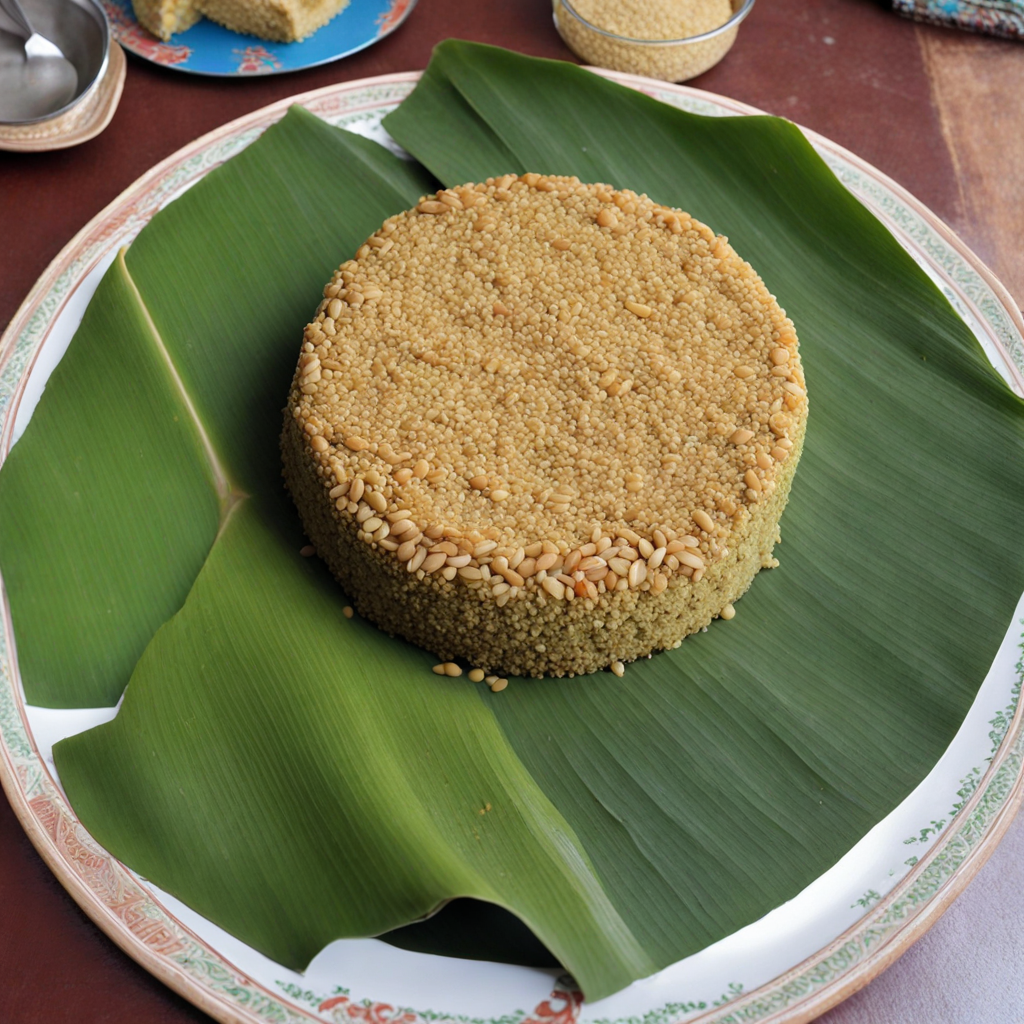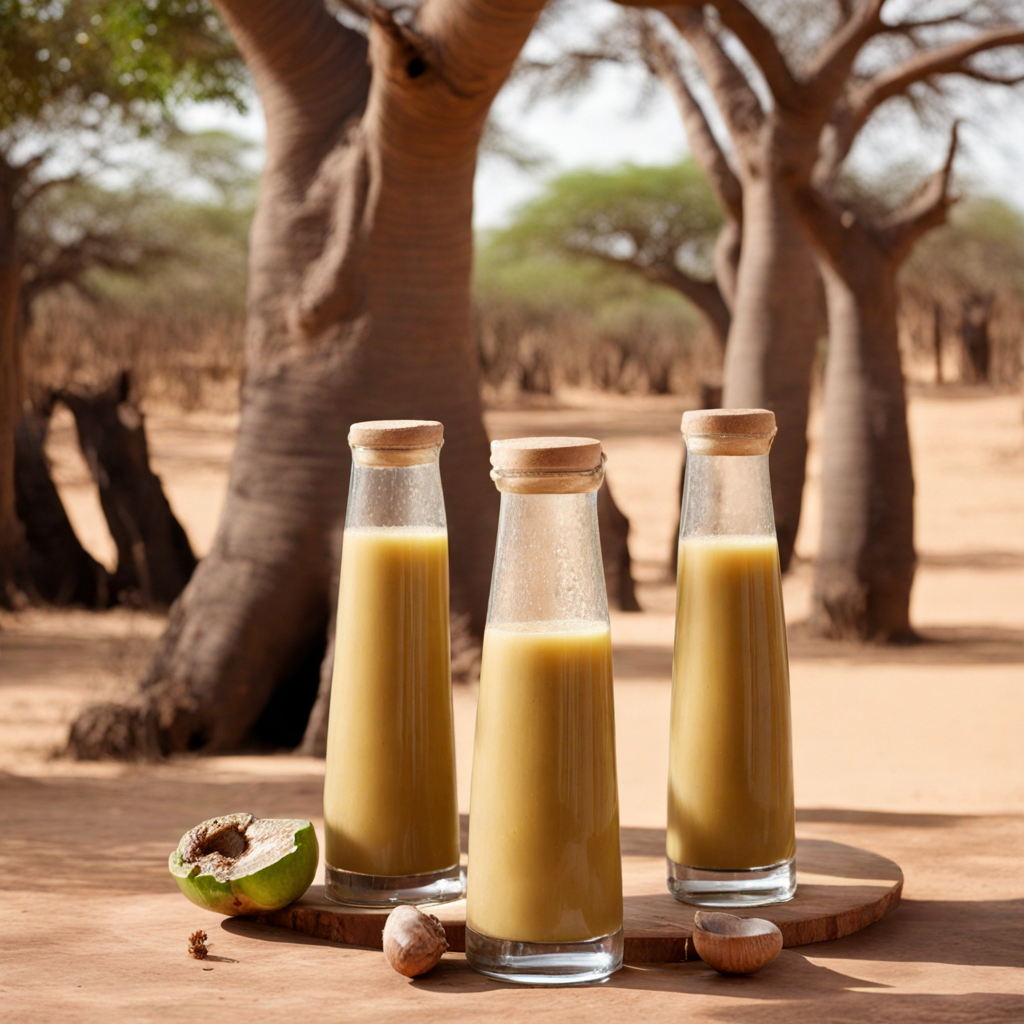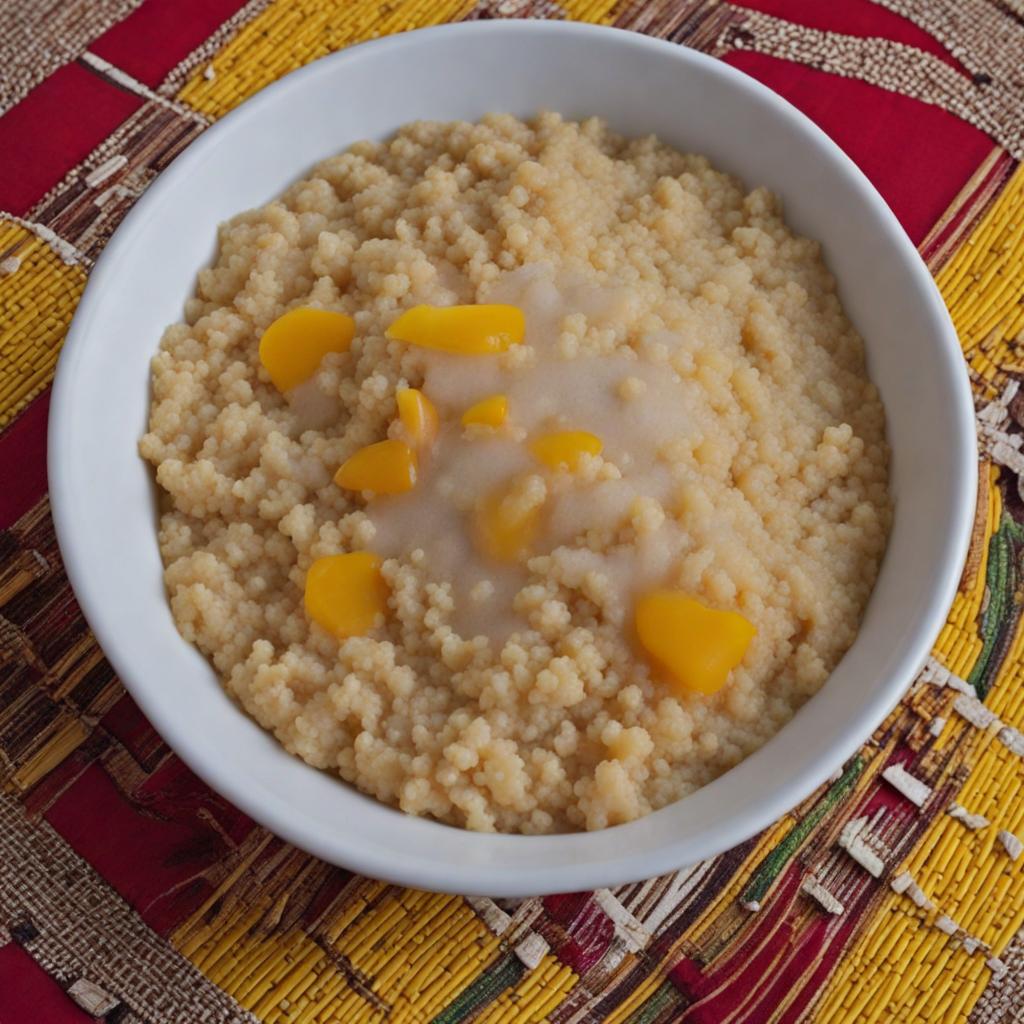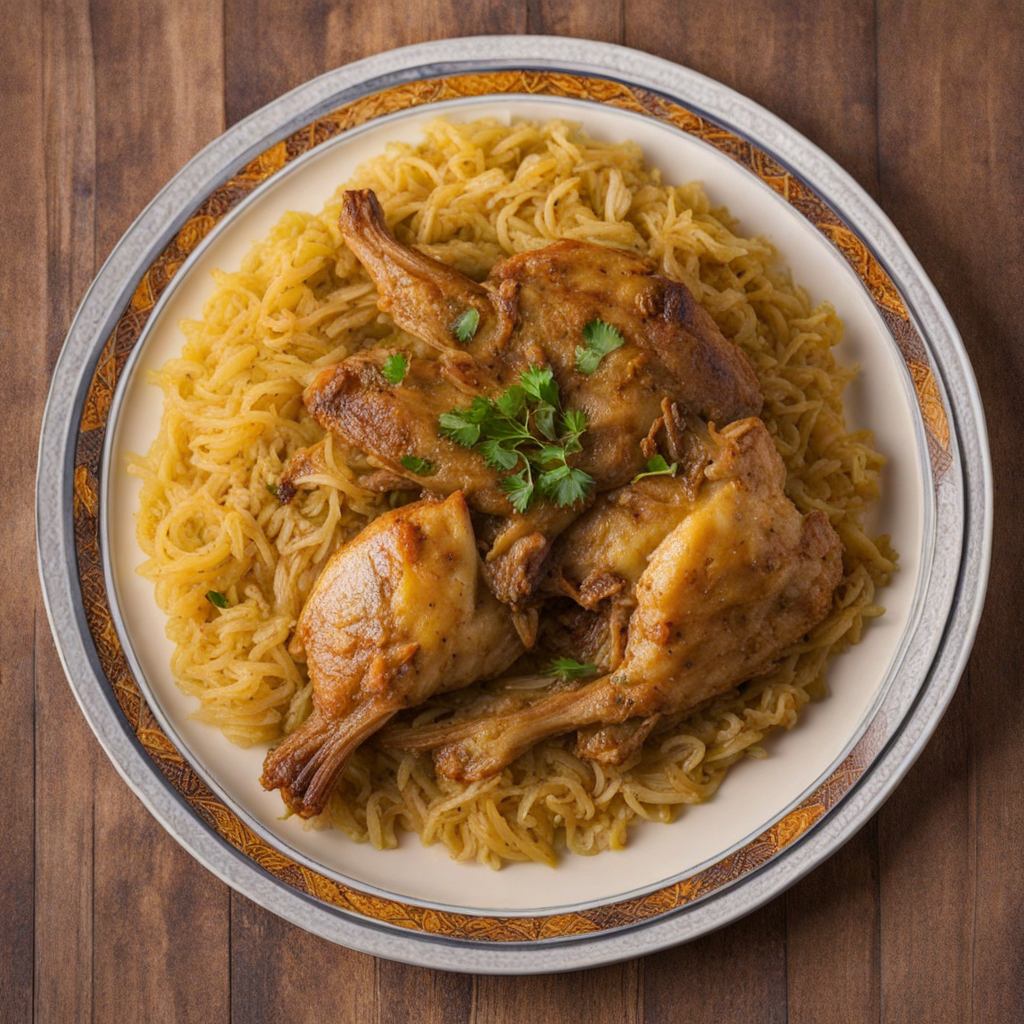Ngome
Ngome is a traditional dish from Senegal that embodies the rich culinary heritage of West Africa. It is primarily made from a base of fonio, a small-grained ancient cereal that is celebrated for its nutty flavor and impressive nutritional profile. The fonio is typically cooked until fluffy and light, providing a perfect canvas for the vibrant ingredients that accompany it. The dish often features a medley of seasonal vegetables, such as carrots, bell peppers, and greens, which not only add color but also enhance the dish's flavor and texture. The combination of these fresh ingredients creates a hearty and wholesome meal that is both satisfying and nourishing. What sets Ngome apart is its unique seasoning and preparation methods. It is usually seasoned with a blend of spices that may include garlic, ginger, and a touch of chili, creating a delightful balance of heat and aromatic depth. Some variations of Ngome incorporate proteins such as fish, chicken, or lentils, making it versatile for different dietary preferences. The cooking process often involves simmering the ingredients together, allowing the flavors to meld beautifully, resulting in a dish that is fragrant and inviting. Ngome is often enjoyed as a communal dish, served in a large bowl for family and friends to share, which reflects the Senegalese tradition of togetherness and hospitality. The experience of eating Ngome is not just about the flavors, but also about the cultural significance it holds. Each bite offers a taste of Senegal's rich history and the vibrant life of its people, making it a perfect dish for those eager to explore new culinary horizons.
How It Became This Dish
Ngome: A Culinary Jewel of Senegal #### Origins and Ingredients Ngome, also known as "Ndam," is a traditional dish from Senegal that embodies the rich agricultural heritage and cultural diversity of the region. The dish is primarily made from a combination of millet or sorghum flour, which are staple grains in West Africa, and is often accompanied by a variety of vegetables and sometimes meat or fish. The origins of Ngome can be traced back to the ancient civilizations of the Senegal River Valley, where agriculture was first practiced, and millet was cultivated. Millet, a drought-resistant grain, has been a vital part of the diet in Senegal for centuries. It thrives in the arid conditions of the Sahel region, making it a reliable source of sustenance for communities that have historically faced challenges in food production. As a food item, millet is not only nutritious but also deeply embedded in the cultural practices of Senegalese society, often associated with celebrations, rituals, and communal gatherings. #### Cultural Significance Ngome is more than just a meal; it is a symbol of community and heritage. In Senegal, food is central to social life, and Ngome plays a vital role in various cultural practices. It is often prepared for significant occasions, including weddings, religious festivals, and communal feasts, reflecting the importance of sharing food in fostering social bonds. The communal aspect of preparing and consuming Ngome is particularly noteworthy. Traditionally, women gather to prepare the dish, often engaging in lively conversations and storytelling as they work together. This practice not only strengthens social ties but also passes down culinary knowledge and traditions from one generation to the next. The preparation of Ngome is seen as an art, with each family possessing its own unique recipe that may include a variety of spices and local ingredients, thus enriching the dish's flavor profile and cultural significance. In addition to its social aspects, Ngome also carries spiritual significance. In some communities, the dish is offered to the spirits of ancestors during rituals and ceremonies, reflecting a belief in the interconnectedness of food, the living, and the spiritual world. This reverence for food as a conduit between the material and spiritual realms speaks to the broader Senegalese worldview, where food is often seen as a blessing and a means of honoring one's heritage. #### Development Over Time As Senegal has evolved through colonial times and into the modern era, so too has the dish of Ngome. The arrival of European colonizers in the 19th century introduced new agricultural practices and ingredients, influencing traditional Senegalese cuisine. While millet remained a primary ingredient, other components began to be incorporated into Ngome, including vegetables such as okra, tomatoes, and onions, as well as proteins like chicken, fish, and beef. These adaptations reflect the blending of culinary traditions that occurred during this period. The post-colonial era saw a resurgence in the appreciation of indigenous foods and culinary techniques, as Senegalese people sought to reclaim their cultural identity. Ngome, with its deep roots in local agriculture and communal values, became a source of pride. It was during this time that chefs and home cooks alike began to innovate with the dish, experimenting with different flavors and presentation styles, while still honoring traditional methods of preparation. In contemporary Senegal, Ngome is celebrated in restaurants and homes alike, bridging the gap between traditional practices and modern culinary trends. Chefs often highlight the dish on their menus, showcasing local ingredients and contemporary cooking techniques. This not only elevates Ngome as a gourmet offering but also serves to educate both locals and tourists about the cultural significance of Senegalese cuisine. The globalization of food culture has also played a role in the evolution of Ngome. With the rise of social media and food blogging, there has been an increased interest in Senegalese dishes beyond its borders. Ngome has found its way into international culinary festivals and food events, where it is presented as a unique representation of West African cuisine. This exposure has not only broadened the palate of food enthusiasts worldwide but has also contributed to a greater appreciation for the culinary traditions of Senegal. #### Modern Interpretations and Global Influence Today, Ngome continues to inspire chefs and home cooks both within Senegal and across the globe. Its adaptability allows for a variety of interpretations; some choose to create a vegan version using only vegetables and legumes, while others embrace the rich flavors of meat and seafood. The dish can be served as a main course or a side, and its versatility makes it suitable for both casual dining and formal occasions. One of the most exciting developments in the realm of Ngome is the fusion with international cuisines. Chefs are experimenting by incorporating elements from other culinary traditions, such as adding spices from Indian or Middle Eastern cooking or pairing Ngome with global sauces and garnishes. This fusion not only highlights the versatility of Ngome but also showcases the interconnectedness of food cultures in an increasingly globalized world. Furthermore, as issues of food sovereignty and sustainable agriculture gain prominence, Ngome serves as a reminder of the importance of preserving traditional food systems. The dish exemplifies the potential for local ingredients to create nutritious and culturally significant meals, encouraging a return to local sourcing and seasonal cooking. #### Conclusion Ngome represents a vibrant tapestry of Senegalese culture, history, and community. From its ancient roots in the agricultural practices of the Senegal River Valley to its modern interpretations in gastronomic circles, Ngome embodies the resilience and adaptability of Senegalese culinary traditions. As it continues to evolve, this cherished dish remains a testament to the power of food as a means of connection, celebration, and cultural expression. Whether enjoyed at a festive gathering or a quiet family meal, Ngome is a dish that nourishes not only the body but also the spirit, reminding us of the rich heritage it carries. Through each bite, one can savor the history and stories woven into this beloved Senegalese dish.
You may like
Discover local flavors from Senegal


